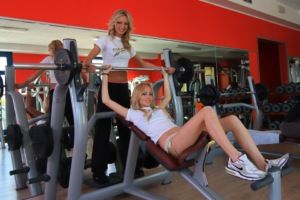News
Science News in Brief: One in three sports nutrition supplement-users hit by side-effects
This article is more than 7 years old.
In other news, livestock are benefiting from consuming fewer antibiotics and women are reducing the risk of breast cancer by having children earlier, but the fight against climate change is not being won by sustainable forestry

Palpitation alert … and this photographer doesn’t even take supplements (photo: Pixabay)
Around 5 percent of the adult population has experienced side-effects after taking sports nutrition supplements, according to a DTU study.
Widespread usage
An estimated 16 percent of 15 to 55-year-olds take the products, which means approximately one in three users are affected.
Some 22 percent of the users take the supplements on a daily basis, while 42 percent admit to occasionally using more than one product per day.
Serious side-effects
Around 20 percent of the users have experienced at least two types of side-effects, which tend to include palpitations, chest pain or sensory disturbance.
Products like these were originally developed for elite athletes, but their usage has become mainstream in correlation with the increase in fitness centres and fitness activities like crossfit.
Danish dairy cows out-producing foreign rivals
In 2017, the average Danish dairy cow produced 9,600 kg of milk – the highest output in the EU, according to data from Eurostat. In comparison, Dutch cows produced 8,700 kg, British cows 8,100 kg and German cows 7,800 kg. Danish cows have become steadily more productive over the last 20 years – in 1998 the average output was only 6,800 kg. Cows in western Europe countries like Denmark produce far more than those in the east of the continent – a performance that Danmarks Statistik attributed to “a combination of good breeding, professional advice and sound management”.
Early childbirth reduces the risk of breast cancer – study
One in nine Danish women will have breast cancer at some point in their life, according to a new survey of 2.3 million women carried out by the Statens Serum Institut. However, of those 11 percent, not everyone carries the same risk. The survey also showed that a woman reduces her risk of developing breast cancer by 8 percent for every child she has before the age of 28 – a protection that tends to develop in Week 34 of the pregnancy. Breastfeeding, on the other hand, had no effect on reducing the risk. Researchers hope this knowledge could eventually lead to some sort of pill to protect women against the disease. On average, Danish women have their first child at the age of 29.2.
Pigs more resistant to antibiotics than chickens, but Denmark is improving
Danish pigs are more resistant to antibiotics than chickens, according to a European study carried out in nine countries, which the DTU Food Institute was a major contributor to. The study assessed 9,000 samples taken from 359 farms, concluding that Danish and Dutch farm animals were the least resistant – primarily because major efforts have been made to reduce consumption. The other seven countries were Belgium, Bulgaria, France, Italy, Poland, Spain and Germany.
Carbon capture and storage not a saviour, claims new study
A new study that involved Aarhus University suggests that sustainable forestry makes a negligible contribution to fighting climate change. Even if the carbon capture and storage of European forests was maximised, the effect would be mostly insignificant, the primarily Dutch study concluded. Instead, the researchers advised, the forests need to adapt to climate change conditions such as increased fire, wind speeds, and drought and pests in order to maintain the current timber supply and continue providing ecological, social and cultural benefits.
Antibiotics harmful to intestinal bacteria – study
A study by University of Copenhagen and Steno Diabetes Center Copenhagen suggests that a course of antibiotics is extremely harmful to intestinal bacteria – not only during the treatment but for months afterwards. The bacteria play a vital role in strengthening the body’s immune system and metabolism, but according to the study of 12 healthy young men, antibiotics completely eradicate it. The bacteria then return, but slowly, and six months later they are still not at full strength.










































